With the third generation of its smartphone series, Nothing made the unusual move to launch the cheaper ‘a’ line first, unveiling the Phone 3a and 3a Pro in March. Now, it’s time for its latest flagship. The Nothing Phone 3, starting at $799 (with a $899 option with 16GB of RAM) goes up against giants like the Google Pixel 9 and Samsung Galaxy S25 — a competitive slice of the smartphone world. Once again, though, there’s nothing in the market that quite resembles a Nothing, as the company attempts to balance distinctive design with flagship (and some not-quite-flagship) components.
The big change this time around is that Nothing is swapping the flashing lights of its Glyph Interface for a tiny dot-matrix display on the rear of the device and is calling it the Glyph Matrix.
It’s the shiny design lynchpin of Nothing’s Phone 3. The matrix is made of 489 LEDs, and offers more utility than a light show. Nothing says it's an evolution of the flashing lights of the Glyph Interface into something more practical. With that aim, there’s a Glyph button that sits under the glass back. Another benefit of this shift, according to Nothing’s head of design Adam Bates, is that removing the Glyph lights freed up more space within the phone.
Instead of having the lights on the back flash in patterns to indicate when certain contacts are calling, the Phone 3’s new tiny screen can display monochromatic images instead. At first, these will be preset shapes, but eventually, you’ll be able to customize your own animation (or static dot-matrix image — it’s unclear) for each of your contacts. Ahead of launch, Nothing shared a web portal that lets people take photos and turn them into Glyph patterns, but it’s like a very, very small Gameboy camera (but worse). The one I took kinda looks like my head? I guess? At least there’s a contrast, and gives a glimpse of what users might be able to show on the matrix screen
Alongside Glyph-style notifications, the matrix will be able to display simple widgets, such as weather and battery levels. It can be a stopwatch, and even a low-res mirror (more on that later). It can also be used as a visual countdown when using a timer with the camera, too. And there will even be games, like rock-paper-scissors and er, spin the bottle. Thankfully, Nothing didn’t make the assembled media test this at its big global launch. You’ll be able to make your own Glyphs through an SDK being released by Nothing. It’ll be interesting to see how difficult it is to program your own glyphs. You know what I want, already? A tamagotchi.
My first impression is that it’s a little more restrained than the light show of the Glyph Interface on previous phones. Additionally, a dot-matrix design really aligns with the era of design inspirations that Nothing is drawing from. You can lightly interact with the matrix through the Glyph button, which is intriguingly built under the rear cover of the Nothing Phone 3. It’s a single button, so learning the quirks of a long-press and a short-press, especially when there’s no tactile response, takes a bit of time.
Flanked by other eager photographers, YouTubers and media, I took a little too much time making the Glyph mirror work. Weirdly, you can’t use it as a selfie guide with the primary cameras, or at least I didn’t figure out how to during my hands-on.
Elsewhere, the design is inspired by the lines and shapes of the New York City subway map, while the see-through back of the Phone 3 has a three-column design that divides the component curves, camera modules and glyph matrix.
The Phone 3 is Nothing’s thinnest phone yet and is 18 percent thinner than the Phone 2. The new Nothing flagship also lacks the chonky camera unit that’s on the Phone 3a Pro. This is because, this time, Nothing has the budget to do so: the Phone 3 costs $350 more, so it can use smaller (even custom-made) components to shrink the footprint.
Instead, the three-camera layout reminds me a lot of the latest Galaxy S24 Ultra, with only slightly protruding camera lenses. It’s not flush, but perhaps I’m asking for too much — the only contemporary smartphone with an entirely flat camera unit is the Pixel 9a.
Despite its slimmer profile, the device still features a periscope zoom on a 50-megapixel sensor. It goes up to 3x optical zoom, 6x digital zoom and a 60x AI Super Res Zoom. (Yes, we all blame Google and Samsung for this nonsense.) This will also serve as a macro camera, allowing for clearer close-up shots.
The main camera is also 50MP, with an f/1.68 aperture (Nothing says it’s 70 percent faster at capture than the Phone 2) and even includes a lossless 1.5x zoom. There’s also an ultrawide camera with a 114-degree field of view and, you might have guessed, a 50MP sensor. Even the front-facing camera is 50MP. Expect the usual Android array of shooting features across the camera system, including Auto Tone, Portrait Optimizer, Night Mode Macro Mode and Action Mode. There are also several shooting presets to browse for your favorite shooting aesthetic, which I enjoyed playing with on a demo unit.
I’m hopeful that the Phone 3 will be a capable enough smartphone camera. Taking some early shots, during a hectic hands-on session at the launch event, the camera app seemed faster than past Nothing devices and low-light processing seemed pretty close to the likes of Google’s Pixel.
Imaging has typically been the weakest part of Nothing’s phone strategy, but each iteration it gets better. It’s something I’m looking forward to putting to the test. Nothing has added an LED light that flashes red to indicate video recording. This can still be disabled in settings, but it’s a nice touch that taps into the red splashes you’ll see throughout Nothing’s hardware and software.
The Phone 3 also packs the company’s brightest display yet, reaching up to 1600 nits at its maximum brightness settings, peaking at 4,500 nits with compatible HDR content, The 6.67-inch screen has a higher 1.5K resolution than the Phone 2. There’s also IP68-rated protection against dust and water.
Rounding out the spec sheet, the phone has a Snapdragon 8s Gen 4 processor, marking the biggest compromise this year. Nothing told me that the Phone 3 wasn’t chasing specs like phones that cost several hundred dollars more. However, the Galaxy S25 has the more powerful Snapdragon 8 Elite, and it’s also $800.
The good news is that the Phone 3 shouldn’t be perceptibly slow or laggy — the company says it’s five times faster than the Phone 3a. Nothing added there should be a 60 percent improvement on AI performance compared to the Phone 2. I’m intrigued to see how battery life fares, but not too worried. The OnePlus 13 Pro had the same processor and performed very well in our battery rundown test.
The 5,150mAh silicon-carbon battery can be charged to 50 percent in 20 minutes with a compatible 65W charger, and up to 100 percent in under an hour. It’s one of the first phones to arrive in the West with a silicon-carbon cell, adding further intrigue to how well the battery life will perform. There’s also 15W wireless charging, which Nothing seems to be keeping exclusive to its most premium phones.
The Phone 3 runs Android 15 out of the box, but with Nothing’s spin on things, featuring custom icons and native apps. That includes Essential Space, which works with a hardware button launcher first introduced on the 3a. While there were rumors that Nothing might fold the feature into a subscription, it’ll be free for the foreseeable future. However, Smart Collections, which was meant to collate screenshots and other files is still being worked on and won’t be available at launch.
The focus, software-wise, may be the new Glyph Matrix, but you can expect some of the typical AI-assisted features like natural language search that Nothing calls Essential search. It will be able to tap into everything on the Nothing Phone 3. Nothing’s cheaper 3a devices leaned into software too, but with the Phone 3 there’s more importance on the specs. The question is: Is this flagship enough?
The Phone 3 is priced at $799 with 12GB of RAM and 256GB of storage. An $899 model will also launch with 16GB of RAM and 512GB storage. Both black and white versions will be available to pre-order on July 4, with sales starting July 15 on its own store at nothing.tech. The company plans to launch its own drops in select physical locations on July 10.
This article originally appeared on Engadget at https://www.engadget.com/mobile/smartphones/nothing-phone-3-hands-on-dot-matrix-glyph-flagship-phone-173019742.html?src=rss https://www.engadget.com/mobile/smartphones/nothing-phone-3-hands-on-dot-matrix-glyph-flagship-phone-173019742.html?src=rssChcete-li přidat komentář, přihlaste se
Ostatní příspěvky v této skupině
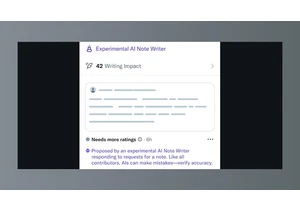
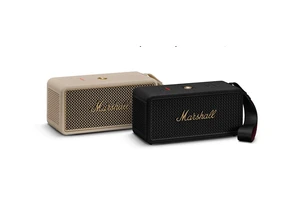

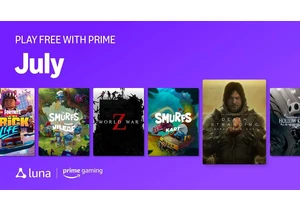
Amazon announced a fresh batch of games that it's giving away for free or nearly free in July. The company's cloud gaming platform, Amazon Luna, has a few notable standouts on its lineup of free ti
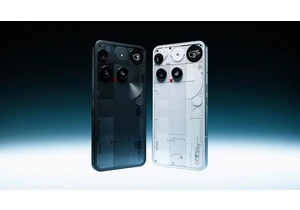
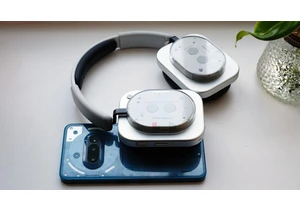

Xbox has confirmed the first batch of Game Pass additions for July. The headliner this
